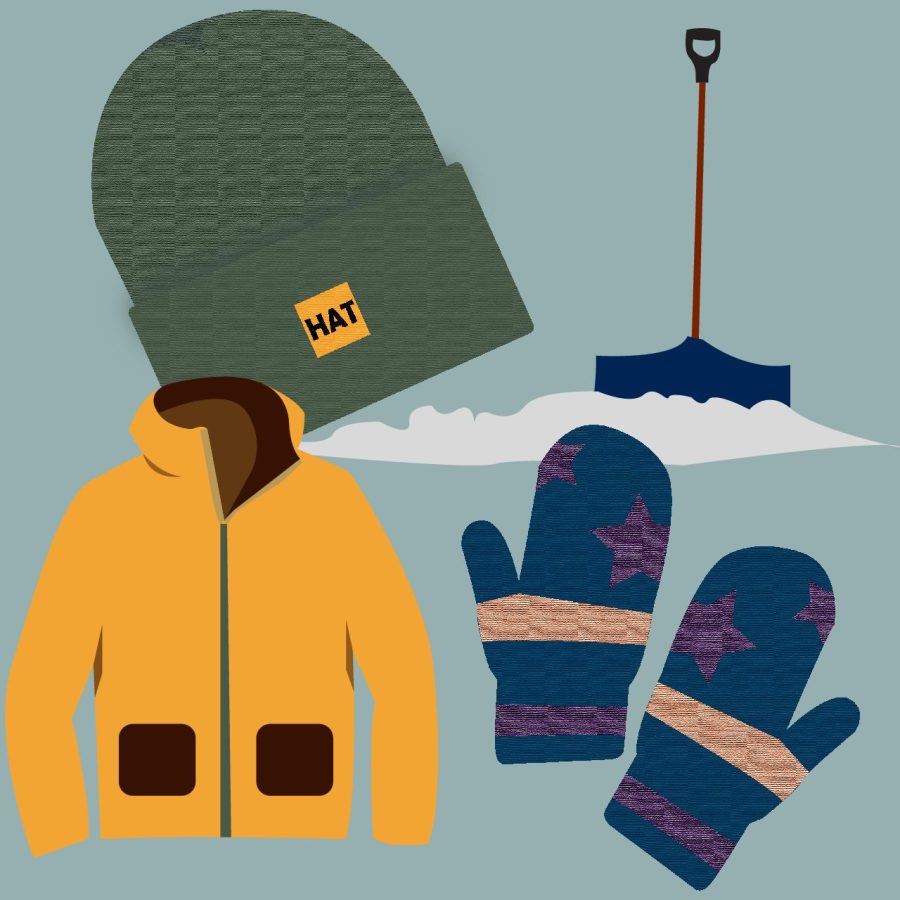Editorial — How to survive the Upper Peninsula winter
December 1, 2022
Although the snow that fell before Thanksgiving break has melted away, now is the best time to prepare yourself for the next four to five months of cold weather in Marquette.
Winter in the Upper Peninsula is quite magical. Winter recreation, like snowboarding, cross-country skiing and snowshoeing, are all great ways to stay active and enjoy beautiful scenery throughout the winter months.
However, to have an enjoyable winter experience, you must be prepared for the unexpected and extreme weather patterns that strike the region regularly. There are several areas we have identified below that require thoughtful planning to ensure you stay safe and warm as the snow begins to pile on.
- Clothing
Whenever traveling in the winter, whether it is by foot or vehicle, it is important to bundle up. As ridiculous as it may sound, a pair of long johns or leggings to wear beneath your pants is an Upper Peninsula necessity. Additionally, two hats and a few sets of gloves will keep you prepared just in case one set gets wet from melting snow.
You should not walk or drive anywhere without a winter coat and an insulated pair of boots. If you do not own either of these things, the Ripple Effect Coat Closet offers them without charge in addition to other winter necessities — no questions asked. The closet is also accepting donations from those who have outgrown or no longer need old winter gear.
- Car preparedness
If you are a frequent driver, your vehicle should contain the following items in case you find yourself stranded in the cold. To start, non-perishable food items and water should be kept in your vehicle at all times. A first aid kit, whether homemade or purchased from a store, is always great to have on hand. These often contain emergency items, like thermal blankets and flares, which could save your life.
Everyday-use items that should be kept in your vehicle include a snow brush, ice scraper and miniature shovel. If your vehicle is ever stuck in the snow, kitty litter or a large piece of cardboard can be placed under your tires to help them gain traction. Most vehicles also have removable floor mats, which could be used in this scenario as well.
Lastly, many of you may have heard about dumping warm or hot water on your vehicle’s windows to quickly remove ice. Do not do this, for it can shatter your windows. If you plan to drive in the winter, give yourself extra time to warm up your vehicle and defrost the windows. Also, never drive with snow on your car.
- Driving in the snow
Drive slow. Do not be ashamed of driving slowly in the winter, and always be sure to slow down much sooner than your intended stopping point. Black ice is real, and it is scary, so it is best to give yourself time to react if your car does begin to slide. And while easier said than done, try your best to stay calm and in control if you do begin to drift.
If you do find yourself stuck in the snow, several removal methods can be utilized. Before beginning any of these, however, be sure to shovel as much snow as possible from around your tires. Also, if at any point in the removal process you hear your tires spinning out (meaning they have no traction), stop immediately.
- Outdoor adventuring
It is tempting to curl up indoors and essentially hibernate throughout the winter months. However, it is important to stay active during the cold season when our bodies naturally want to shut down.
For those looking to adventure outdoors, over-preparedness and exercising extreme caution will ensure a happy and safe hiking, skiing or snowshoeing trip. Always wear extra layers when planning to spend time outdoors, even if you are sure you will work up a sweat. Remember, you can always take a layer off.
Also, be sure to let a close friend or family member know your intended route before setting off into the woods. Many apps allow you to track your progress on local trails, and these will come in handy if you find yourself lost or off-trail. A portable charger is a necessity as well.
Many people do not carry hiking packs on short hikes, like Sugarloaf Mountain, because they feel they are not necessary. This is far from the truth. A hiking pack should be carried on all hikes, no matter the length, for accidents can occur. Ten essential items should be carried in every hiking pack, which include food, an emergency shelter and a fire starter.
The bottom line when trying to survive an Upper Peninsula winter is being well-prepared for the unexpected. This can be in the form of the above-mentioned tips and tricks, or even as simple as watching the local weather radar.
We are in for the long haul when it comes to dealing with ice and snow, so best of luck to all of us as we navigate the upcoming winter season.
Editor’s Note: The North Wind is committed to offering a free and open public forum of ideas, publishing a wide range of viewpoints to accurately represent the NMU student body. This is an editorial, written by the North Wind Editorial Board in its entirety. It reflects the majority views of the individuals who make up the editorial staff of the North Wind. It is the policy of the Editorial Board not to endorse candidates for any political office, in order to avoid aligning this public forum with particular political organizations.






























